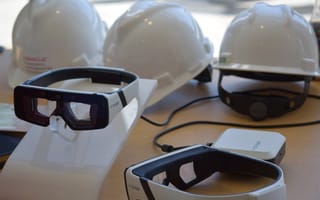About 30 miles north of Chicago in suburban Deerfield, a construction trailer is parked behind the old headquarters of Textura — a company Oracle bought for $663 million in April 2016. A steel fence circles the site and gravel carpets the cold ground.
It may not look like much, but this unassuming site is the home of the Oracle Innovation Lab: a live construction site where the software-as-a-service firm’s global technology partners and customers come to test new tech.
Built in just three weeks last year, the Oracle Innovation Lab was initially intended to show how the company’s products could be used in the construction industry, according to Burcin Kaplanoglu, the innovation officer for Oracle’s construction and engineering unit. Over the last year, more than 850 contractors, engineers, project managers — from as far as China and as close as Chicago — have visited the site. It’s success has inspired execs to expand. Starting in late December, Oracle will add technology from its utilities and communications business units to the Lab.
Kaplanoglu declined to specify what exactly the expanded innovation hub will include or when it will be finished, but said the trailer will remain open for visits while construction is underway. Oracle will use its construction technology, along with its partners, to build the new site at the same location.
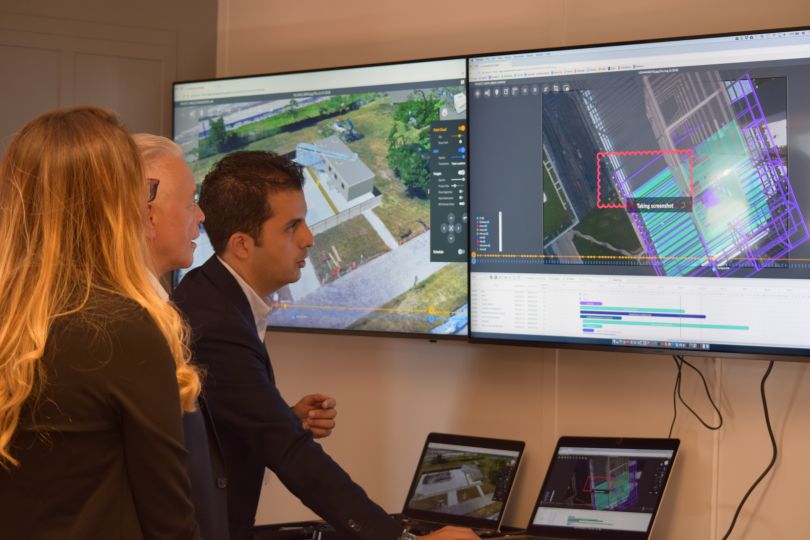
Building an understanding of Oracle’s construction tools
The Lab currently showcases Oracle’s four construction technologies: Textura for project management and billing software, Primavera for scheduling, Aconex for project and model collaboration and Unifier for process optimization. Officials also use Oracle Live Experience to video chat, call and record conversations among product teams.
The Lab is not a space to develop features and functions feedback for Oracle’s technologies, Kaplanoglu said. Rather it’s a space for the company to help its customers realize how best to use their technologies, as well as their partner’s products.
“I am not learning like, ‘You should have your button here or there,’” he said.
It launched with the help of eight of Oracle’s technology partners, including Bosch, which used the space to showcase its connected tools. It also launched with the help of Triax Technologies, which featured its internet of things devices that track and provide safety sensors for workers. Oracle also looked for ways to further integrate its construction products to partners like Bosch.
“When we help them figure out what's the best way to use the products, that helps us to understand how they're using them.”
“When we help them figure out what's the best way to use the products, that helps us to understand how they're using them,” Kaplanoglu said. “Then we figure out how this can complement our partner products. It's like it brings everything together.”
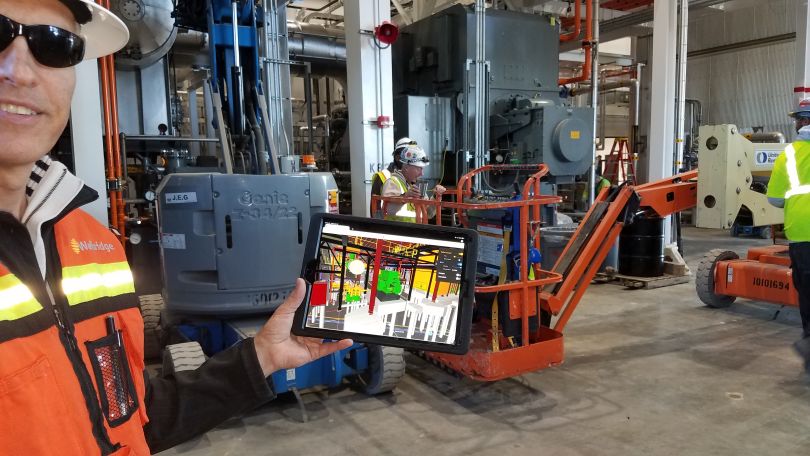
Checking your project plan in VR
The Lab’s primary focus, however, is to serve as a live construction site.
Sensors embedded in the steel fence track when materials arrive at the site. Workers are equipped with positioning technology, which let management know where they are at all times. The site was built with the help of Aconex — a company Oracle bought for approximately $1.2 billion in December 2017 — which helped product managers realize their initial rendering actually wouldn’t allow people to walk around one of their walls.
Once they realized the wall’s positioning was off, product managers used Aconex to contact the site architects, who were based remotely. An architect then used Aconex’s virtual reality system to verify product managers’ findings and changed the wall’s positioning. Aconex recorded every interaction the team made.
“It allows everyone on the site — from architects to owners to contractors to subcontractors — to communicate and access project data in one spot,” Kaplanoglu said.
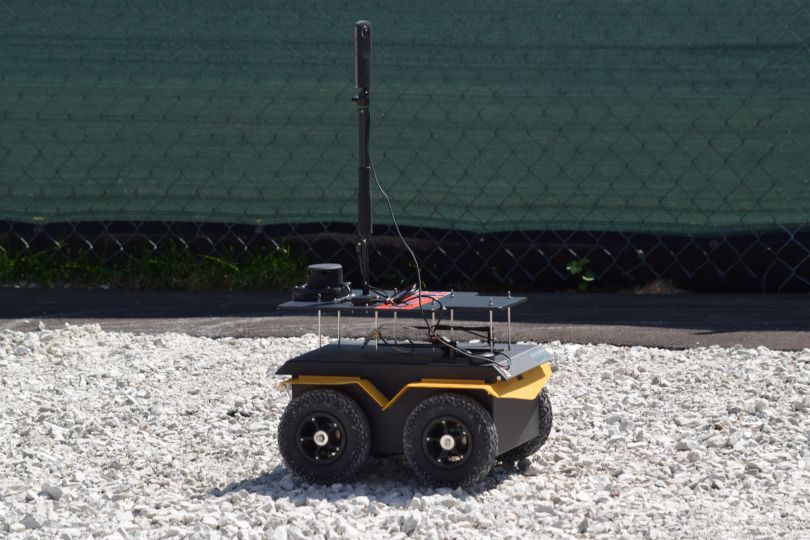
How autonomous vehicles and fast internet will change construction
John Jurewicz, lead technology officer at Walbridge, visited the site the day it opened, looking for insight on how technology can ease the construction firm’s scheduling and communication challenges.
He said two of the biggest issues Walbridge faces right now are around internet throughput — or, the ability to exchange data quickly online at its construction sites — and updating its daily schedule. At the opening, Jurewicz said he tested autonomous vehicles, robots and augmented reality as a means to solve these problems.
“There are a bunch of technologies we've always wanted to try, but to test them on a live construction site is difficult to do because there's a lot of action.”
“There are a bunch of technologies we’ve always wanted to try, but to test them on a live construction site is difficult to do because there’s a lot of action, a lot of vetting,” Jurewicz said.
The Lab provided a controlled environment to test technologies Jurewicz had previously only read about.
One product he tested was a wearable computer that controlled a skid steer, which is a small machine with a front loader that can pick up and carry materials. Normally, a skid steer would rely on a 3D model of the site surroundings to control where it dug so it could, for example, avoid hitting water lines, Jurewicz said. He said that map usually needs to be pulled from an extranet, or a secure network of servers hooked up through the web. But it can often be hard to generate a strong enough internet connection from just the construction trailers on site to access the map, Jurewicz said.
At the Lab, Jurewicz said the internet throughput reached 10 gigabits per second, the fastest he’d ever seen. One way Oracle fires up such a strong connection is to utilize a high-speed, low latency 5G network.
“If you’re having an excavator dig a trench, you want to make darn sure that you're not going to hit existing stuff, so the existing stuff has to be verified, usually on the site,” Jurewicz said.
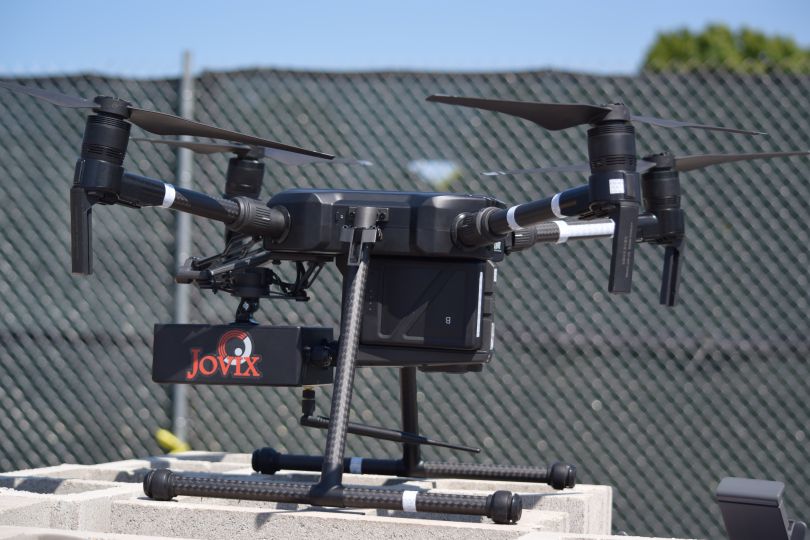
Rovers and drones also whizzed around the construction site, capturing images of workers’ daily progress, Jurewicz said. These images were then automatically uploaded and overlaid onto the original construction schedule. Cameras installed on the site also captured 3D images of the build every five minutes. These pictures were also immediately added to the schedule.
By tracking build progress, Jurewicz said Walbridge could provide remote workers information on how construction was going, as well as ensure quality and plan ahead. Long-term, he said the technology could allow Walbridge to compare project processes between jobs and figure out the most efficient way to organize tasks and workers.
“It's like we're able to view into a crystal ball.”
“You could be watching a construction sequence and know where all your equipment and people are, not just to do a safety analysis — to make sure they’re not working on top of each other or hurting each other or causing risks to each other — but are they working in the most productive way?” Jurewicz said. “It's like we're able to view into a crystal ball.”
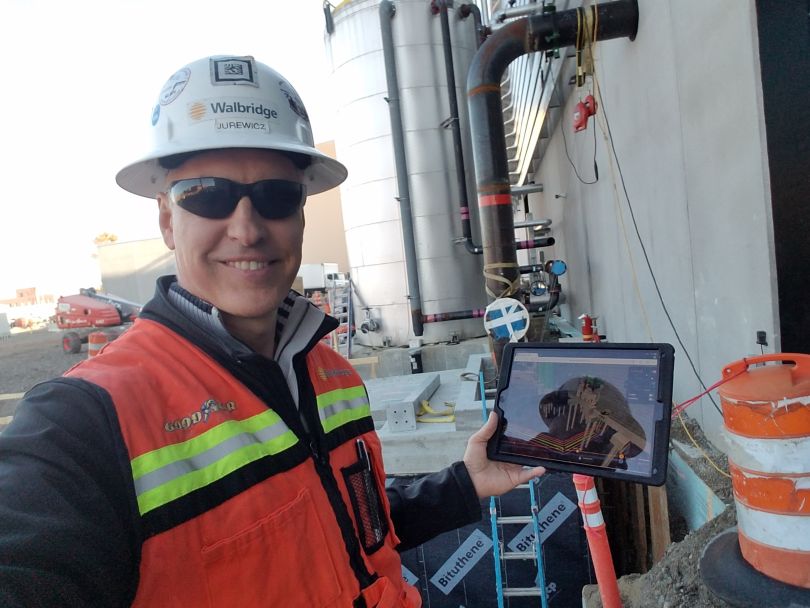
What’s next for the Lab
Once complete, the new site will be renamed the Oracle Industries Innovation Lab, and the expanded “indoor outdoor” space will feature tech for Oracle’s utility and communications customers, Kaplanoglu said.
The Lab will demonstrate how to use solar, wind and other distributed energy sources to manage electric grids. It will also use artificial intelligence and internet of things technology to control network operations and speed outage restoration. Officials will also demonstrate how to use data from connected home devices to better plan for electric grid operations.
"We're investing significantly into construction tech, but there is also a lot of investment coming in by venture capital into this space too."
For its construction customers, Kaplanoglu said Oracle is currently testing virtual augmented reality glasses at the Lab. He said Oracle is working with different glasses manufacturers to mix the physical environment of a construction site with scheduling data. Although Google Glass and other hardware providers exist, Kaplanoglu said they haven’t been perfected for the construction industry, which faces issues like blinding sunlight, slow processing speed, short battery life and more.
He named technologies that can assist — or automate — worker functions as the future of construction tech.
“We’re investing significantly into construction tech, but there is also a lot of investment coming in by venture capital into this space too,” Kaplanoglu said. “I think there’s going to be a lot of improvement when it comes to automation in the next three to 10 years.”

